Matthew 9:12
Covid 19 arrived in the silence and isolation of Italian monasteries. From last February to today, hundreds of religious men and women have died of Coronavirus. The 90% of them were over 60 years old and already lived in areas of monasteries transformed into homes for the elderly. Vocations, in fact, are notoriously in drastic decline and the virus has further decimated already small communities, formed above all by the elderly. The pandemic, therefore, has also found the monastic communities unprepared to face it, especially in Northern and Central Italy. Today communities remember those who are not with them anymore. And, looking to the future, together with the few of them remaining healed, they hope that the time has not come for the survivors too.
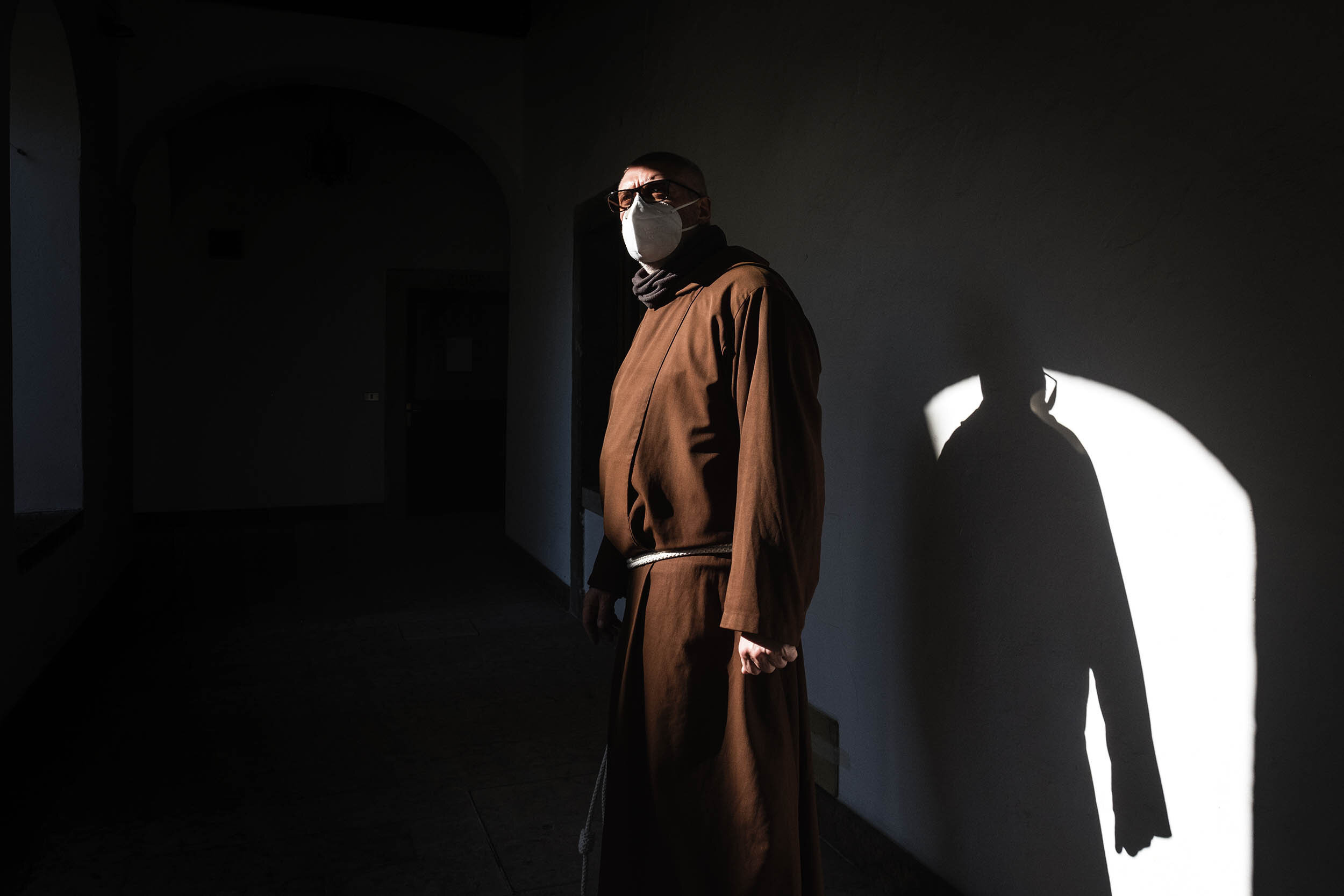
Trento, Italy. Friar Luca Trivellato in charge of the Monastery of the Friars Minor Capuchin. Friar Luca started being in charge of the Monastery after the death of two friars and the contagion of 8 others during the first wave. The relation between the local community and the friars is very close. Due to the death of the two friars and the relocation of the sicks, the religious community is almost disappeared.
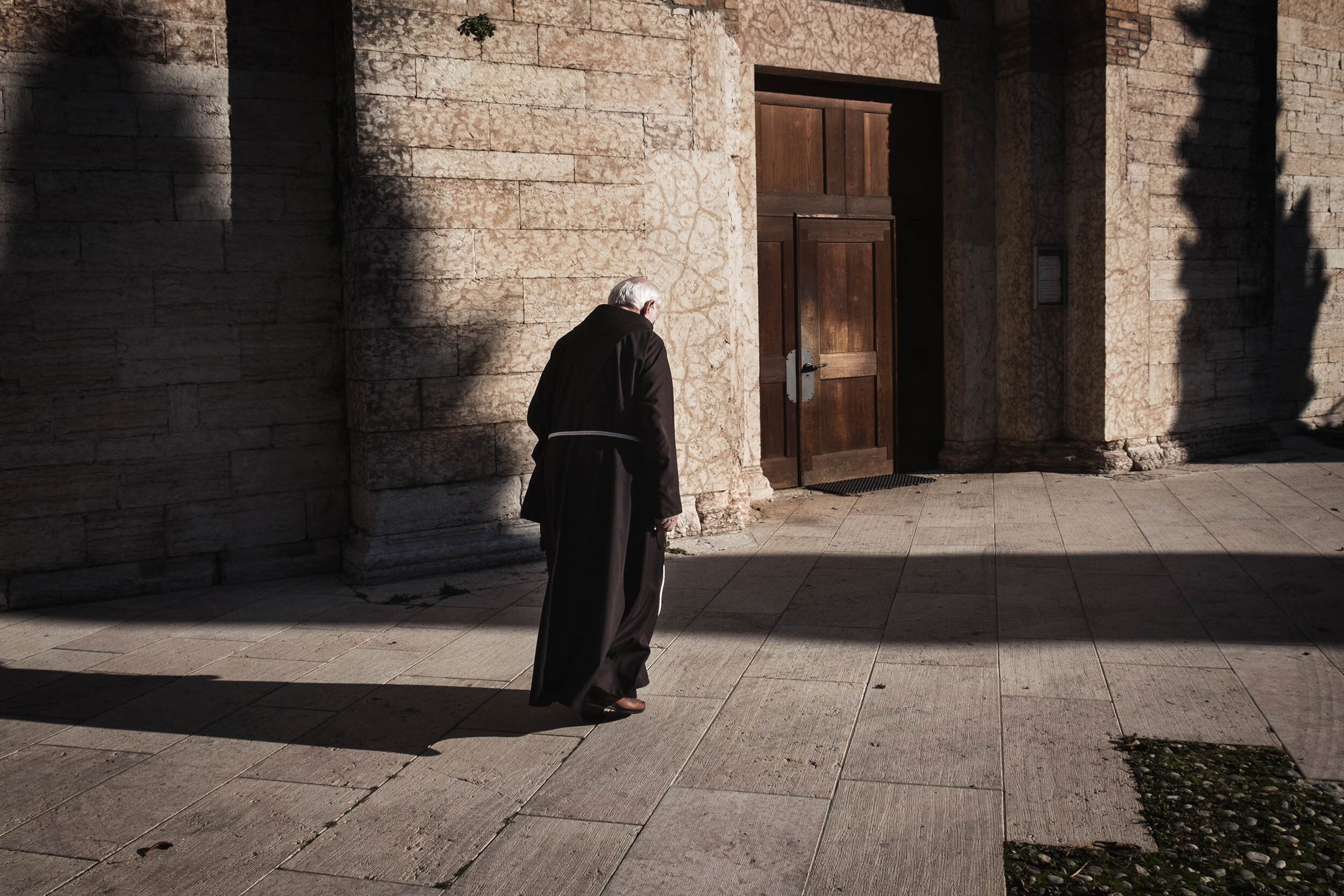
Trento, Italy. San Lorenzo Abbey. A Capuchin friar enters the Badia di San Lorenzo in Trento. The structure is now owned by the Municipality which left it for use by the friars of the monastery. Dating back to the year 1000, in 1966 a flood overwhelmed it, causing the death of a friar, Constantine.

Milano, Italy. Giuseppe Ambrosio Religious Nursing Home. More than 25 elderly Combonian friars live here and arrive at the end of a long missionary journey around the world. Everyone here is a source of stories, experiences and memories. Father Luigi Cocchi is 98 years old. He lived for 45 years in sub-Saharan Africa, between Eritrea, Sudan, Kenya, before returning to Europe. He has lived in Italy for seven years. He speaks Italian, English, French and Swahili.
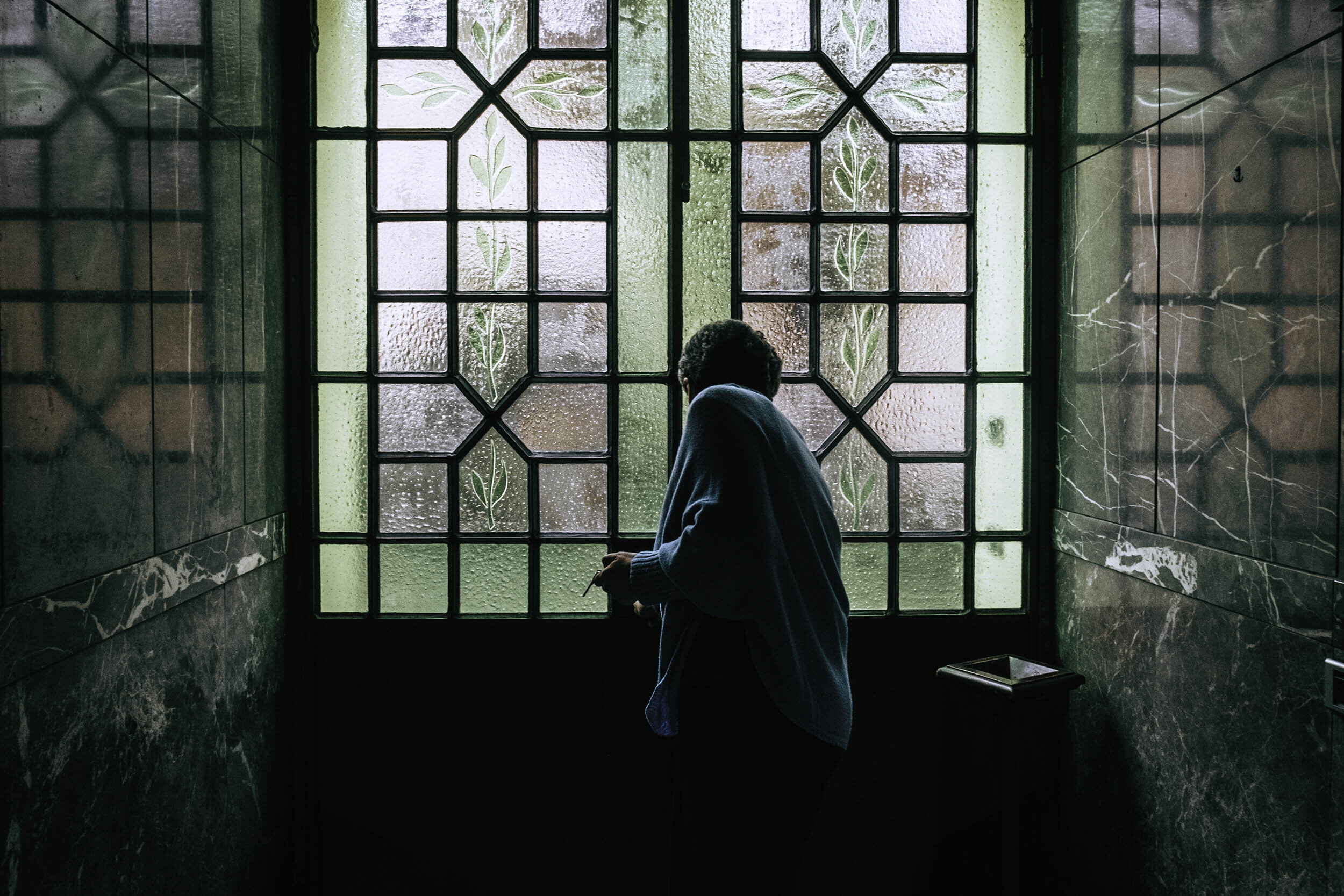
Mortara, Italy. Inside Monastery of the Missionary Sisters of the Immaculate Queen of Peace called Pianzoline. Mother General Simona Corrado closes the Belle Epoque style window that connects the new area of the Monastry from the older part. The Monastry was founded in the Thirties by father Francesco Pianzola (hence the nickname of the nuns called "pianzoline") who thought of attracting to the Catholic faith the poor young girls who worked in the rice fields.

Trento, Italy. Monastery of the Friars Minor Capuchin. View from outside.
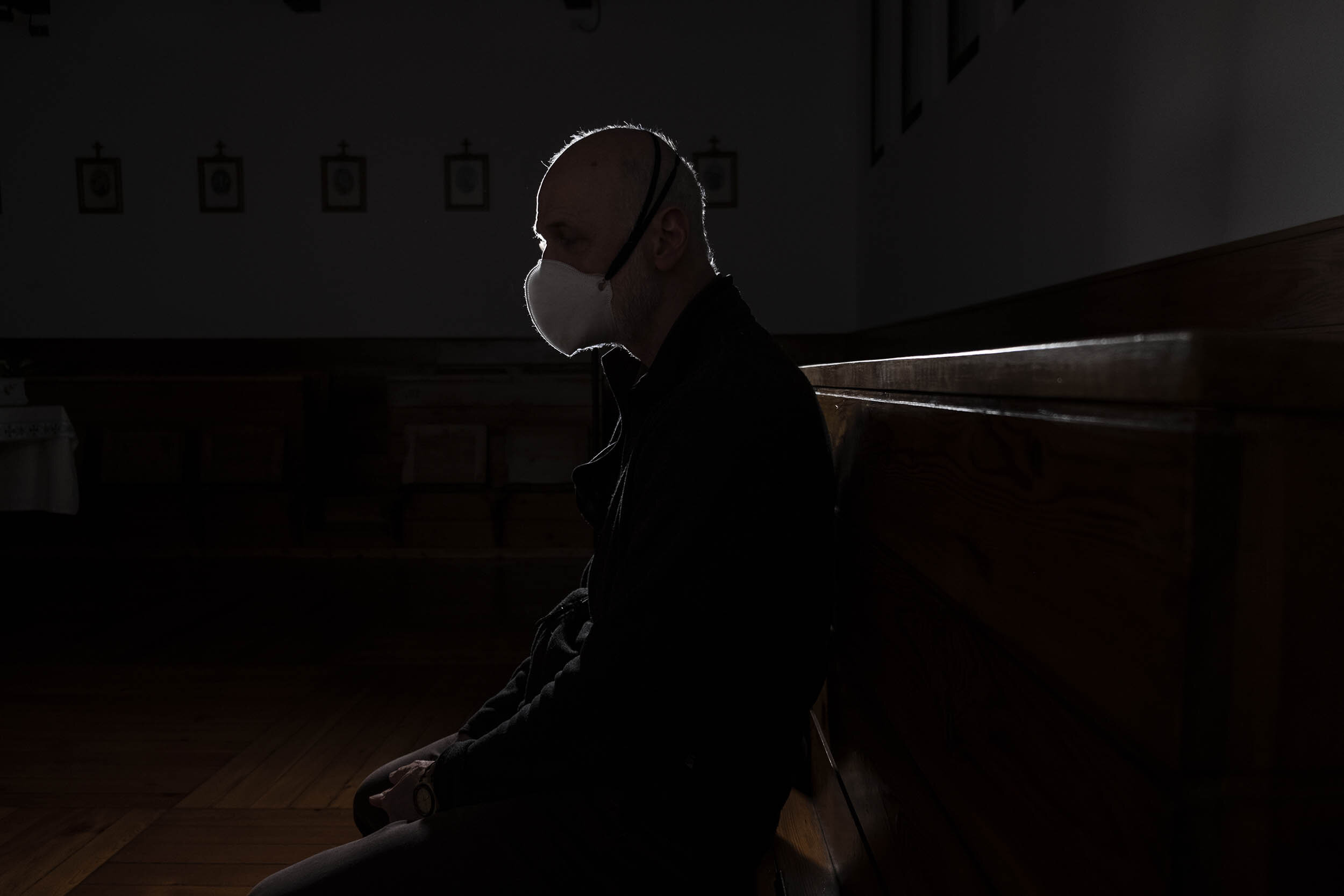
Trento, Italy. Monastery of the Friars Minor Capuchin. Friar Ezio Tavernini. Fra Ezio Tavernini has lived in the monastery for 10 years. He is the chaplain of the Santa Chiara hospital in Trento. Speaking about the people he met, both in the convent and outside the convent, and whom he accompanied to death, he says: "This is a time of authentic mourning. We are like the leaves on the trees, hanging on a destiny we do not know, when it will come".

Milano, Italy. Giuseppe Ambrosio Religious Nursing Home. Father Ezio Rossi is among the oldest guests of the religious nursing house. After a life spent in Egypt, Togo, Lebanon, Sudan, he retired here, awaiting the last days.
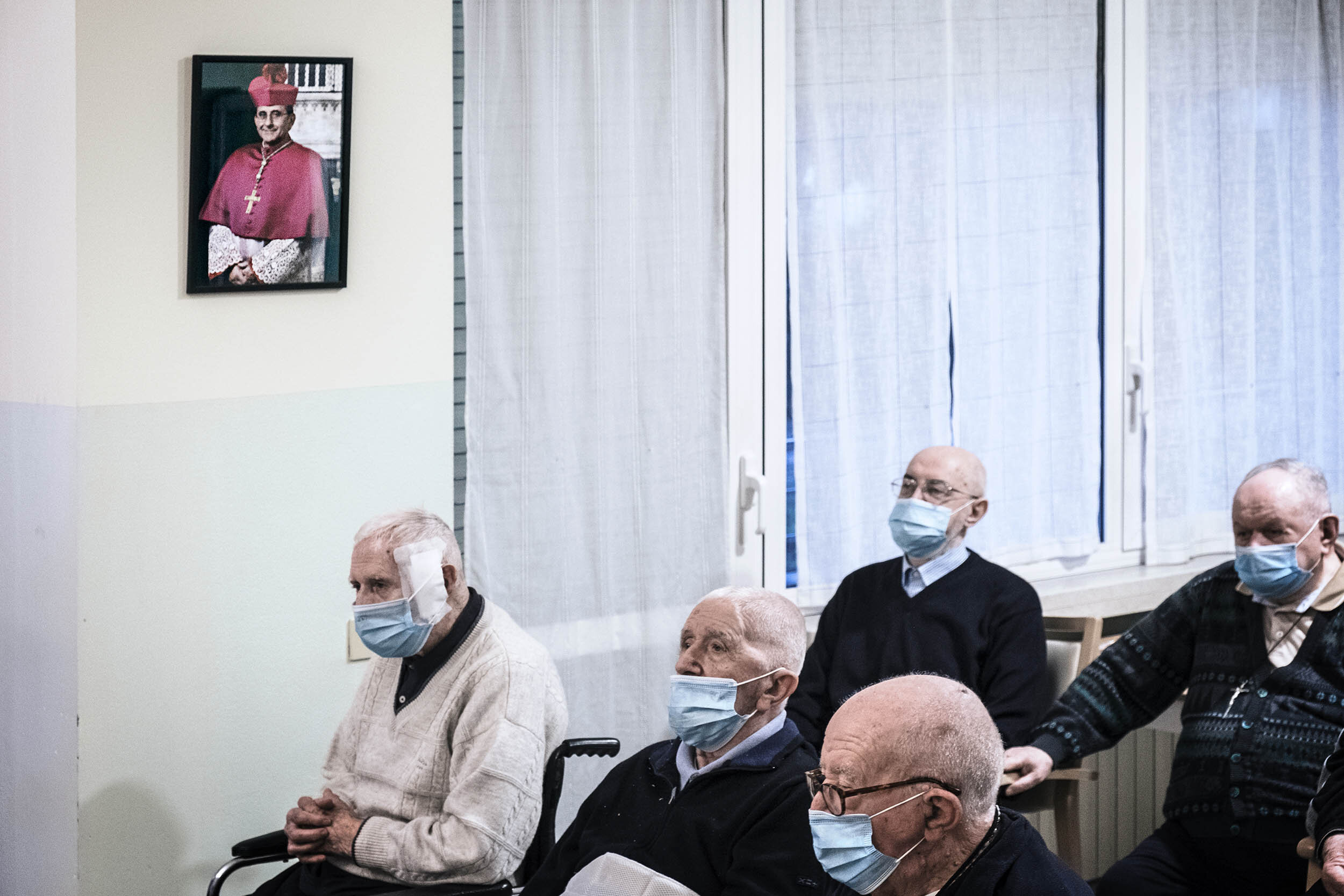
Milano, Italy. Giuseppe Ambrosio Religious Nursing Home. After the epidemic, the Comboniani fathers have only one room large enough in which they can meet while respecting safety distances. Some of them come together to remember the years of the novitiate they lived together, others intertwine the stories of their experiences in Africa or Latin America with concerns for the health of their families. Without them, they will not be able to pass on their adventurous experience to a few others.

A photo from the 1950s from the Mortara Monastery archive. The photo shows a group of "young guards". This is how the founder of the community Father Francesco Pianzola named the girls who he sent to catechize the female workers in the rice fields, to bring them closer to Catholic worship. Among this group of girls, many have embraced the novitiate and have become "pianzoline" nuns.

Trento, Italy. San Lorenzo Abbey. Friar Erminio Gius, 82, travels every day from the monastery to the abbey, where he offers the faithful the service of confession. Professor of sociology and social psychology at the universities of Padua and Trento, he witnessed the death of his brothers. "In this time, fears grip the believers in an exasperated way. It would be enough to have more compassion"
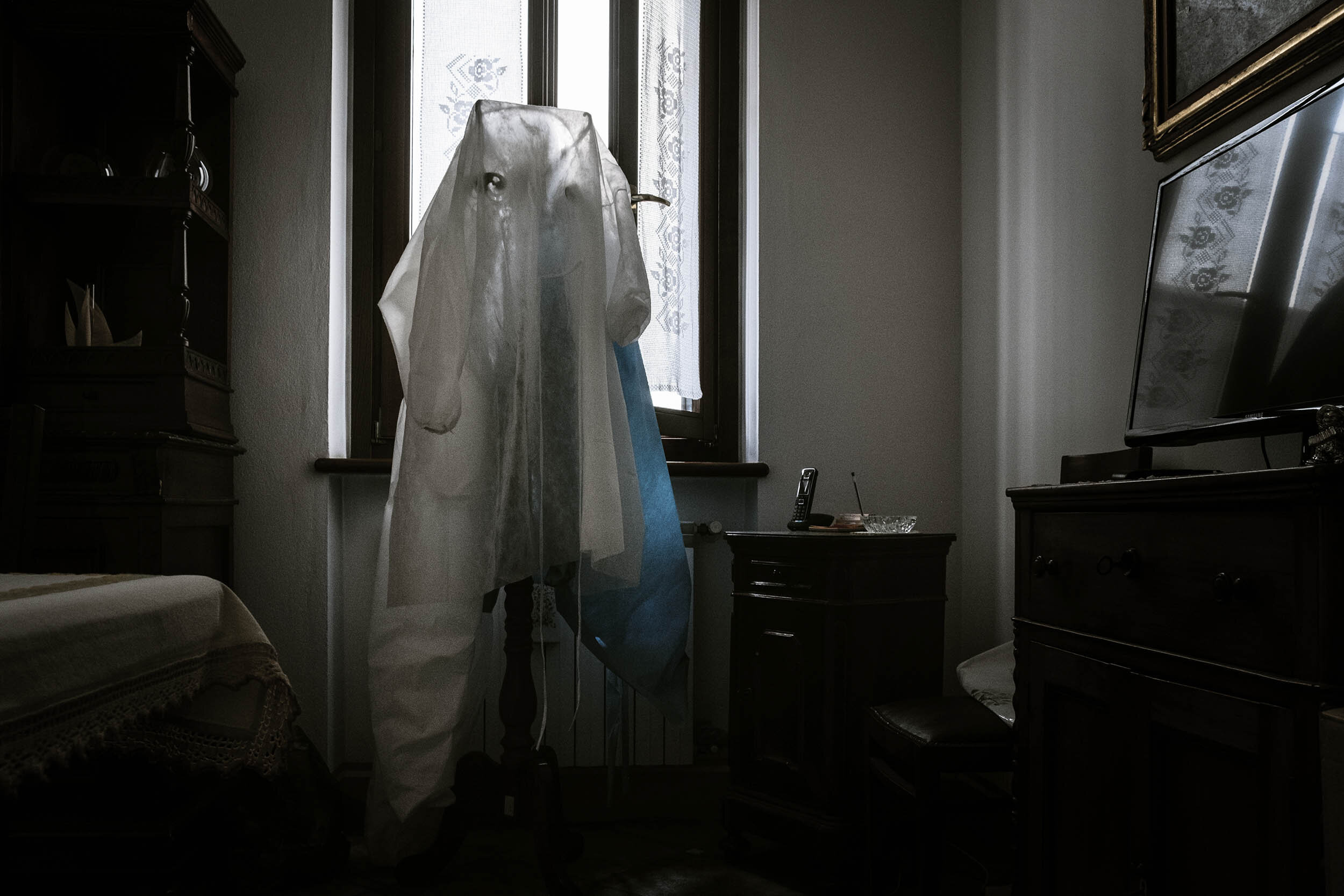
Mortara, Italy. Inside Monastery of the Missionary Sisters of the Immaculate Queen of Peace called Pianzoline. Due to the emergency caused by enormous spread of the virus in the monastery, one of the rooms close to the kitchen function now like a small medical clinic. Medical gowns, which have become familiar objects, look like ghosts. Here died 13 Nuns and 55 out of 56 became sick

Milano, Italy. Giuseppe Ambrosio Religious Nursing Home. The bed of father Bepi Simoni, who died in hospital on March 21, 2020 in Milan. Bepi had become a missionary in 1968 and lived in Congo until 2007. When he fell ill, everyone thought of a trivial flu. The brothers accompanied him on a stretcher to the ambulance and did not think that they would never see him again.

Trento, Italy. Monastery of the Friars Minor Capuchin. Friar Luca Trivellato, head of the Capuchin community of Trento, stands at the door of the room of one of the two Capuchin friars who died last March. Friar Bernardo Maines was ninety years old and was the eldest friar in the Monastry. He lived in Mozambico for 52 years.

Milano, Italy. Giuseppe Ambrosio Religious Nursing Home. View from outside. Milan is one of the cities most affected by the pandemic in the world. In autumn, the infections from Covid-19 returned. The city was again subjected to a curfew and a lockdown. It is no longer possible to walk in the parks in groups.

Milano, Italy. Giuseppe Ambrosio Religious Nursing Home. After the epidemic, the Comboniani fathers have only one room large enough in which they can meet while respecting safety distances. Some of them come together to remember the years of the novitiate they lived together, others intertwine the stories of their experiences in Africa or Latin America with concerns for the health of their families. Without them, they will not be able to pass on their adventurous experience to a few others.

Milano, Italy. Giuseppe Ambrosio Religious Nursing Home. Friar Roberto Strabla. Friar Roberto Strabla is the tabernacle of the memories of the Comboni community of Milan: blind due to glaucoma, contracted in the early days of the novitiate, he worked in the United States, in Uganda, in Mexico. Affected by the Corona virus, he miraculously survived: "I have seen death in the face several times, in Colombia and in Africa, but this time I was really sure of dying". After his recovery, he learned how to use audio calling apps on his mobile phone.

Mortara, Italy. Inside Monastery of the Missionary Sisters of the Immaculate Queen of Peace called Pianzoline. Sister Nadegé Ki, originally from Burkina Faso, resides in France but has been stranded in Italy due to the pandemic and national decrees. When the epidemic broke out in the convent, she decided to stay to lend a hand to the older nuns. Three times a day, every day, she puts on the protective suit and goes to the area of the convent where the positive nuns in quarantine have been confined. She brings them food, a smile, and few words of comfort.

Trento, Italy. Monastery of the Friars Minor Capuchin. Friar Gianpietro Vignadel's room remained as he left it before he died. Giampietro died last March in Trento at the age of 47. He is the youngest Capuchin friar who died due to Corona virus.
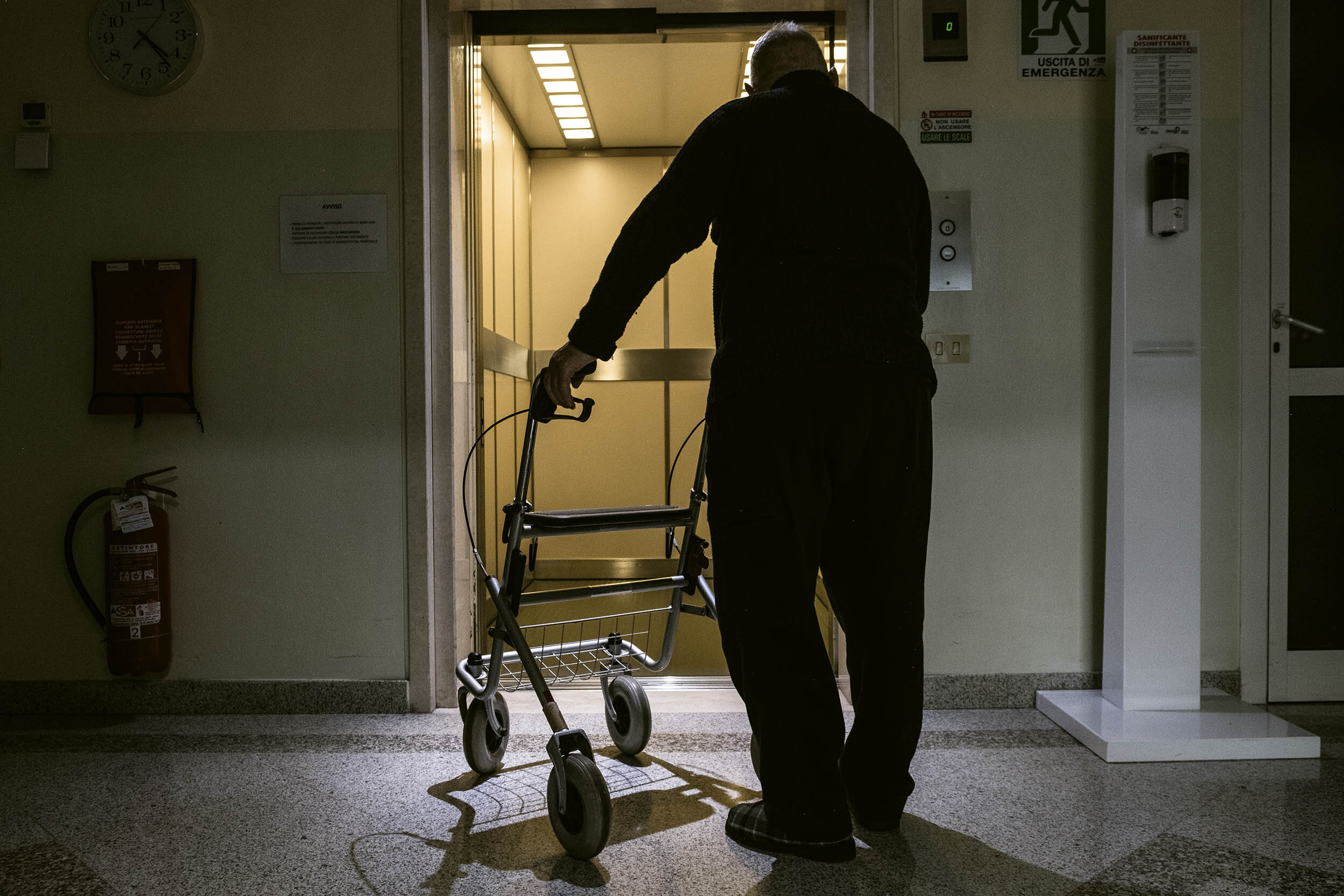
Milano, Italy. Giuseppe Ambrosio Religious Nursing Home. The Giuseppe Ambrosoli nursing home in Milan is one of the Combonian structures that welcome elderly friars during their retirement. The community, despite being among the Catholics richest in vocations from developing countries, suffers from the progressive lack of vocations from the Italian youth.

Trento, Italy. San Lorenzo Abbey. Friar Erminio Gius, 82, travels every day from the monastery to the abbey, where he offers the faithful the service of confession. Professor of sociology and social psychology at the universities of Padua and Trento, he witnessed the death of his brothers. "In this time, fears grip the believers in an exasperated way. It would be enough to have more compassion"

Mortara, Italy. Inside Monastery of the Missionary Sisters of the Immaculate Queen of Peace called Pianzoline. Sister Nadegé Ki is ready to enter the area of the convent where the infection has broken and where about fifty positive nuns are confined. She brings them dinner - grapes, bread, milk and some cookies - and places it on a cart. Then she goes through a long corridor and climbs three floors of stairs. Nadegé is aware of the risk she runs: "As a young woman, you run after the hours. The pandemic taught me that you have to stop. So, after finishing my service, I stop on the stairs to think. And I think the time that it remains to be lived to the end

Mortara, Italy. Inside Monastery of the Missionary Sisters of the Immaculate Queen of Peace called Pianzoline. The mother general of the pianzoline nuns Simona Corrado is the only one of the 56 nuns of the Mortara monastery who did not get sick. She admits that the pandemic has taken something away from her: "I have lost control or, rather, my mania for control. Covid has taught me that we must resign ourselves to the fact that the disease takes pieces of you, even if you didn't get it directly. And that you also have to get carried away by events. If you believe, there is God who thinks about doing the things you can't control
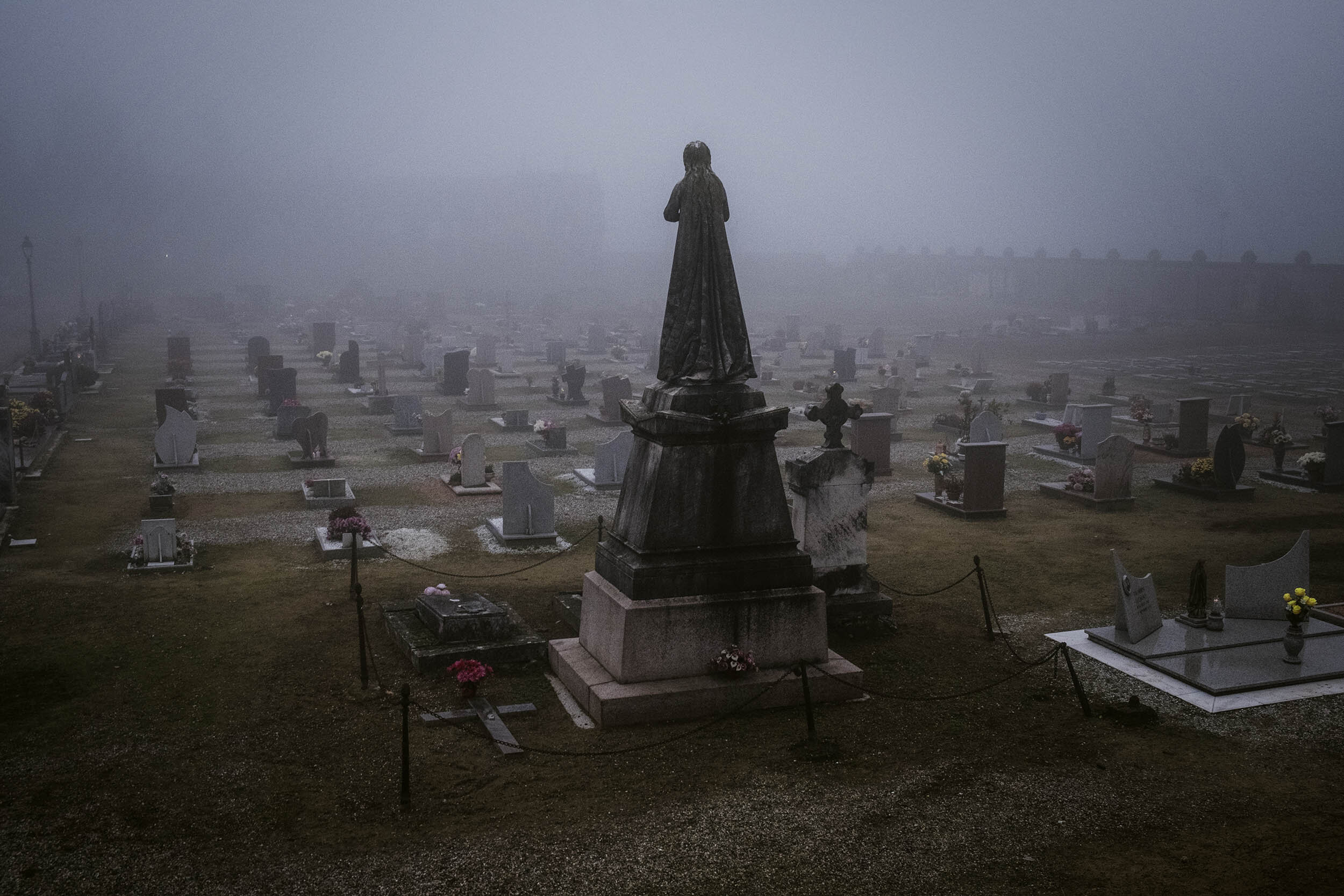
Mortara, Italy. Cemetery. Here lie many of the nuns who died of the virus.
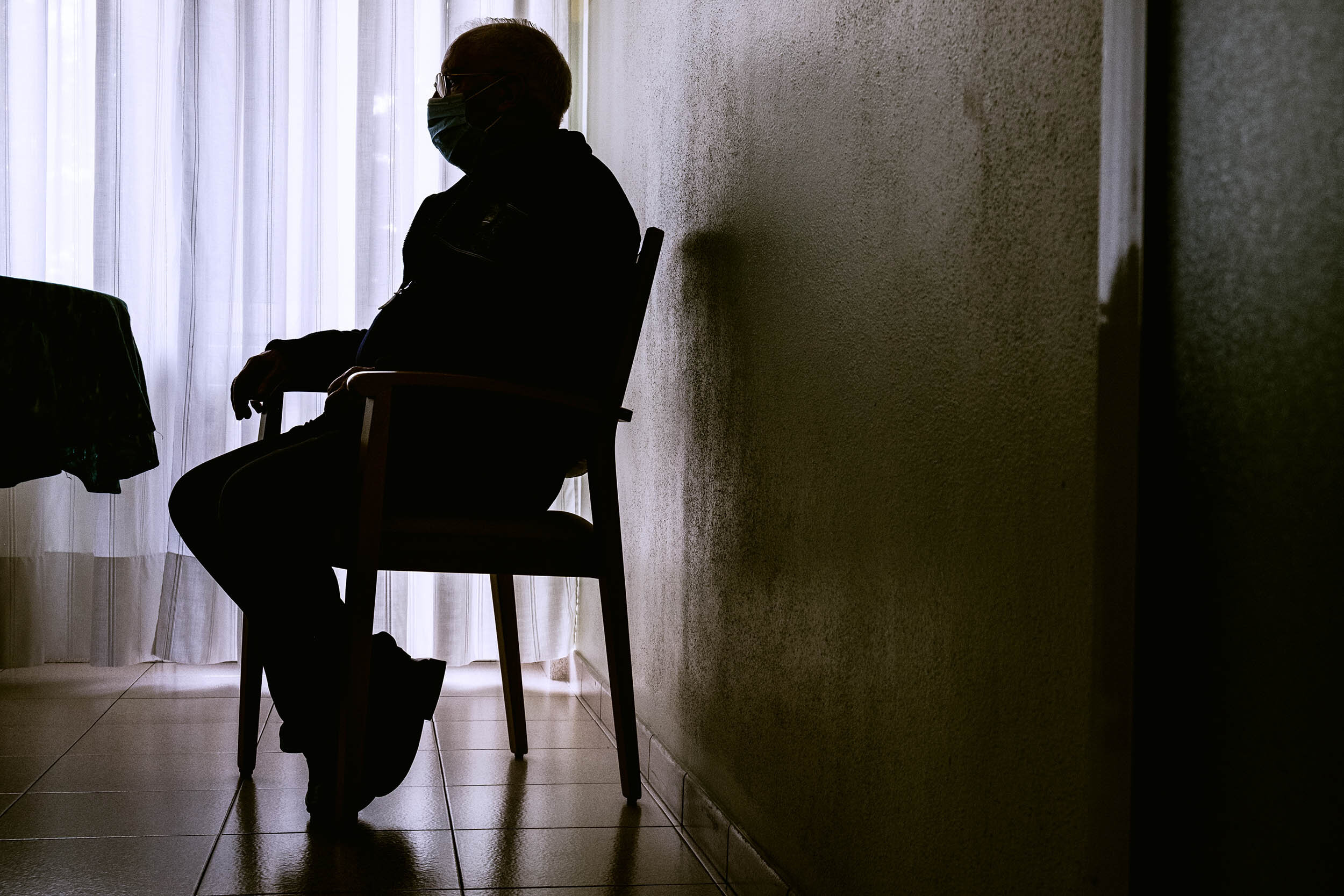
Milano, Italy. Giuseppe Ambrosio Religious Nursing Home. Brother Livio Tagliaferri is the superior of the Comboni community of Milan. He found himself managing, suddenly last March, the Covid pandemic of the convent, when it was still thought to be a trivial flu. "I was shocked when our first sick brother died after six days. But the worst came later: when we had to deny all the elderly guests of our facility contact with the outside world and with their families. Even if we live a community life, for the Comboni Missionaries, human relationship is everything

Mortara, Italy. Inside Monastery of the Missionary Sisters of the Immaculate Queen of Peace called Pianzoline. Nadia Farinelli became the health manager of the Mortara monastery, after many years of friendship with the nuns, to whom she brought her disabled child. Once the epidemic broke out, she found herself making drastic and immediate decisions to separate the healthy nuns from the sick nuns and to replace the nursing staff of the facility who decided not to work anymore in the Covid outbreak. Nadia fell ill with Covid together with her family and children but considers this experience a watershed in her life: "I learned, especially at work, to no longer accept compromises and I consider the nuns of the monastery as my second family".

Sister Teresa Colombo, quarantined in the building that keeps the positive nuns at Covid isolated from the healed ones, communicates via video conference with the religious community of Mortara.

Mortara, Italy. Inside Monastery of the Missionary Sisters of the Immaculate Queen of Peace called Pianzoline. Sister Tiziana Conterbia in charge of the archive of the Mortara monastery. She guards the history and memory of the convent and participated in the cause of beatification of the founder Father Francesco Pianzola. She was assigned the task of communicating with the families of the sisters who died from Covid and of reconstructing the history of their vocations. She says: "The pandemic has deprived me of many friendships, relationships, sisterhoods but it has also made me discover what immense wealth our families are outside the convent".